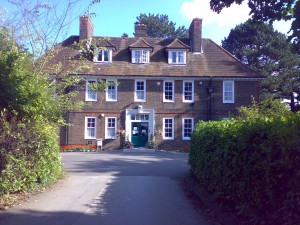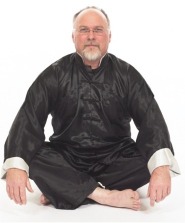I have recently been reading a book which I have found very exciting – “Louder than Words – the new science of how the mind makes meaning” by Benjamin K. Bergen. It is an excellent read, putting the old ideas of visualisation which we use extensively in Tai Chi ( also other arts such as Yiquan ) into a modern neuro-scientific context.
In short demonstrating how visualisation works.
Those of us who study Tai Chi may have been struck – as I have been – by the amount of metaphore and dynamic visualisation within the literature and the teaching. Also by the extent to which the Tai Chi classics for example engourage us to ” think deeply about how and why Tai Chi works”.
I am delighted that this new scientific approach seems to validate this practice and give a few clues as to how we can improve it further.
I have been reading a brilliant book on the use of internal visualisation in movement – Dynamic Alignment Through Imagery by Eric Franklin – this was recommended by my teacher Karel Koskuba and it has much in common with the visualisation I have come across in Tai Chi – also sharing a similar rational regarding ways of moving.
Quite a large tome – but a fairly easy read and easy to dip in and out of – Eric Franklin clearly explains current research and practice.
 I am delighted that the new Tai Chi for Golf classes at The Letchworth Centre for Healthy Living were very well recieved – all that attended the 5 week program seemed to find it of value with one person kind enough to say that:
I am delighted that the new Tai Chi for Golf classes at The Letchworth Centre for Healthy Living were very well recieved – all that attended the 5 week program seemed to find it of value with one person kind enough to say that:
“Ian’s Tai Chi for Golf sessions have improved my flexibility and helped me to focus on developing a more rhythmic, flowing golf swing. The similarities between the golf swing and Tai Chi movements are fascinating. I played one of my best ever rounds after the third session!”
Unfortunately we need to postpone the Tuesday classes at Colmworth – but expect to restart them in September – a shame especially since the people in the group expressed excellent experiences in their golf following the classes – so watch this space!
A lady contacted me recently – her aged father suffering from Alzheimers had just been admited to a residential home – she refered to research suggesting that Tai Chi is good for Alzheimers sufferers and wanted someone to teach it to her father ideally for 20 mins a day. Unfortunately I could not help her or her father – but it got me thinking that there must be many thousands if not millions of people that would benefit from simple, low level Tai Chi delivered in small doses on a daily basis – and that it would not take too much to teach very simple basics to carers and others who could then pass it on at an appropriate level matched to the caree’s needs and abilities.
So I have drafted an example sylabus and a whitepaper on the concept of Tai Chi for carers and am presently in conversation with an alternative health provider to see if we can set up a series of one and two day seminars for carers asap. In the meantime if anybody is interested please contact me.
My first evening of the Tai Chi for Golf seminars at Colmworth ( following last weeks free taster ) was interesting for all of us I think – judging from the feedback – we spent time on body awareness, posture, balance, moving about a vertical axis and moving from the lower abdomen ( the dantien ) all of which was readily related to our group golfing experience. I look forward to next week and seeing how these exercises have been carried forward.
We had our free taster session of Tai Chi for Golf last night which went well, hosted at the friendly family style clubhouse of Colmworth & North Beds Golf Club where the function room proved ideal – the people attending seemed to enjoy it and were able to quickly relate the class to their own Golf and general sports experience.
So it was great that there was much positive feedback about the relaxation both physical and mental derived from the exercises as well as the relevance of balance, weight transfer, posture etc
The course of six forthcoming classes each stands in its own right but they are structured to build gradually on each other so it is perfectly fine to come on a drop-in basis.
 It looks like a bit of a roll for Golf related Tai Chi at the moment – I will be running classes at The Letchworth Centre for Healthy Living with 5 weekly sessions starting on Monday 23rd July. Contact the centre for bookings.
It looks like a bit of a roll for Golf related Tai Chi at the moment – I will be running classes at The Letchworth Centre for Healthy Living with 5 weekly sessions starting on Monday 23rd July. Contact the centre for bookings.
As for my own golf related practice – that has taken a back seat recently to some serious seminars with Master Chen Xiaowang under the CIAA umbrella organised by Karel and Eva Koskuba. Especially notable was the 2 days of Xinjia practice – during which we managed to get through slightly more than half of the form in detail with corrections and many demonstrations by Master Chen – each time I watch I see more in what he does – and each time he corrects my postures I find more connections and more movement and more fluidity.
Golf practice is not forgotten however – I had an evaluation session yesterday with Pete Blanch – a new but very experienced instructor at Mount Pleasant Golf Club, which highlighted a number of areas needing study and practice – but apparently I am not a lost cause!
 My own Golf lessons are proceeding well – lots of internal awareness and structural corrections, plus course craft about reading the layout and topography etc. Really satisfying when it goes well – laugh it off when it doesn’t!
My own Golf lessons are proceeding well – lots of internal awareness and structural corrections, plus course craft about reading the layout and topography etc. Really satisfying when it goes well – laugh it off when it doesn’t!
Following on from which I have arranged to run a 7 week series of “Tai Chi for Golf” classes at Colmworth + North Beds Golf Club with a free taster session @ 7.00pm on 19th June. The classes are primarilly aimed at Golfers but will also be suitable for beginners to Tai Chi who don’t play golf – as we will be focusing on the common basic principles of posture, balance, fluidity, core led movement, internal awareness and connection, integration with external equipment, mental and physical quiet, visualisation etc.
Read “Tai Chi for Golf” white paper here.
I had the opportunity to test swing a few good clubs yesterday – and chat with my instructor James about the feel and balance and how the clubs work – and I was impressed by the feel of the drivers which in some cases seem to float and to have a balance and feel similar to a good sword – but was not inpressed with the irons – until James offered a Japanese Mizuno from his own set which had a much smoother feel and got me thinking further about the whole question of extending one’s body with a tool – sword makers have been working on this for thousands of years – it is not surprising that there has been similarity of development.
I recall being told that the part of a Japanese sword that was used for cutting is the top 4 inches from the tip – so everything was designed around focusing all the speed and power at that part of the blade – pretty much the same as a golf club.
The best sword I ever handled was made in around 1360 and had clearly been used for real – it was quite worn and had small nicks – it came from the high period of Japanese sword making and useage between 900 and 1450 AD – it was quite unremarkable to look at and unsigned like many of the best ones – on the basis that if you couldn’t tell how good it was by the feel of it then you didn’t deserve it anyway. It felt like it had a life of its own and I can well understand the way a very good sword was regarded by people whose life daily depended on it. I imagine that this was a common experience around the world since the need was the same wherever swords were needed.
Surely the same principles apply to any tool or extension to our bodies in achieving the kineaesthetic feel and the mechanical strength to convey power with control from the centre of our movement to the end of the implement – which brings me back to thinking about Chi – and the flow of that power from the centre of the body where we initiate it radially out through our limbs and by connection fluidly along the shaft to the end where it is needed. It is certainly true that when I make a good shot I am barely aware of hitting the ball ( or how I did it ) the flow of power is a lovely feeling. Tai Chi principles all the way!
Does this perhaps explain some of the popularity of Golf – in that it appeals to the ancestral feelings of swinging a weapon in the outdoor world against the elements – very grounded in reality and using ones body in a very integrated way – the golf warrior in fact!


 It looks like a bit of a roll for Golf related Tai Chi at the moment –
It looks like a bit of a roll for Golf related Tai Chi at the moment – 




